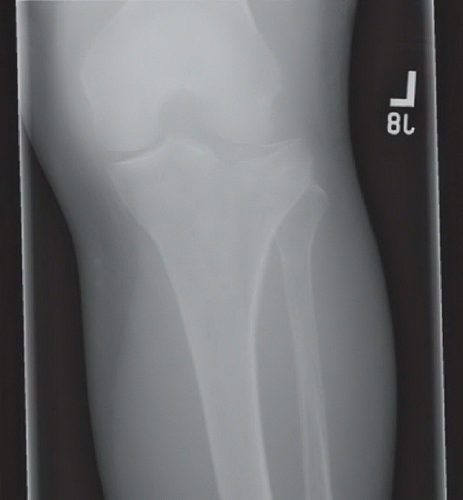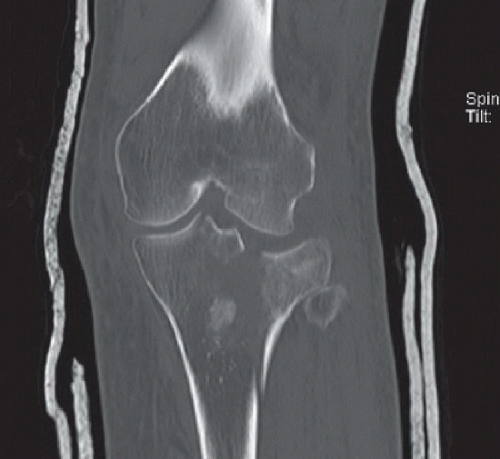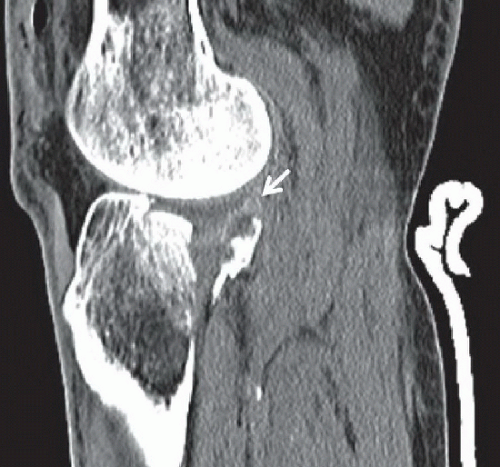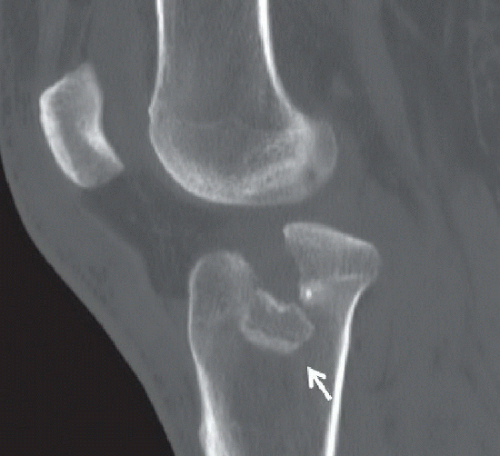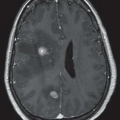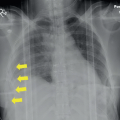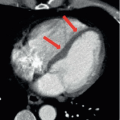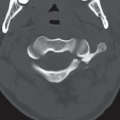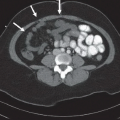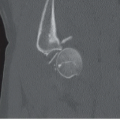Tibial Plateau Fracture with Meniscal Entrapment
Bryan M. Hoag
Daniel B. Nissman
CLINICAL HISTORY
63-year-old female fell off the back of a pickup truck, landing on her left leg, now unable to bear weight.
FINDINGS
Anteroposterior (AP) radiograph of the left knee (Fig. 40A) reveals a mildly comminuted lateral tibial plateau fracture with dominant sagittal plane split; a small amount of articular surface depression is likely present. Coronal CT image in bone window of the left knee (Fig. 40B) confirms the radiographic findings with additional involvement of the tibial spines also noted. Sagittal CT image in soft tissue window (Fig. 40C) demonstrates an avulsed lateral meniscus (arrow) displaced into a fracture cleft. A sagittal CT image through the knee of a different patient (Fig. 40D) demonstrates a nearly rectangular block of bone that has been depressed into the substance of the proximal tibia consistent with a “die-punch” fragment (arrow).
DIFFERENTIAL DIAGNOSIS
Lateral tibial plateau fracture, lateral and medial tibial plateau fracture, medial tibial plateau fracture.
DIAGNOSIS
Lateral tibial plateau fracture with extension to the tibial spines and avulsed lateral meniscus (Figs. 40A,40B and 40C), lateral tibial plateau fracture with large associated die-punch fragment (Fig. 40D).
DISCUSSION
Tibial plateau fractures account for between 1% and 2% of all fractures with the majority occurring in males ages 30 to 60.1 They involve the articular portion of the proximal tibia and can result from a variety of forces including valgus stress, varus stress, axial loading, or a combination of forces. Injury to the tibial plateau can be sustained in a variety of settings including falls from a height, vehicle bumper-pedestrian collision, motor vehicle accidents, and sports-related injury. Tibial plateau fractures may be high-energy or low-energy. High-energy fractures tend to occur in younger patients with normal bone mineralization and result in splitting fractures. Low-energy fractures tend to occur in older patients with decreased bone mineralization and result in depression fractures. Although trauma to the tibial plateau can result in isolated osseous injury, the ligaments, menisci, and surrounding soft tissues are often involved.
Stay updated, free articles. Join our Telegram channel

Full access? Get Clinical Tree


